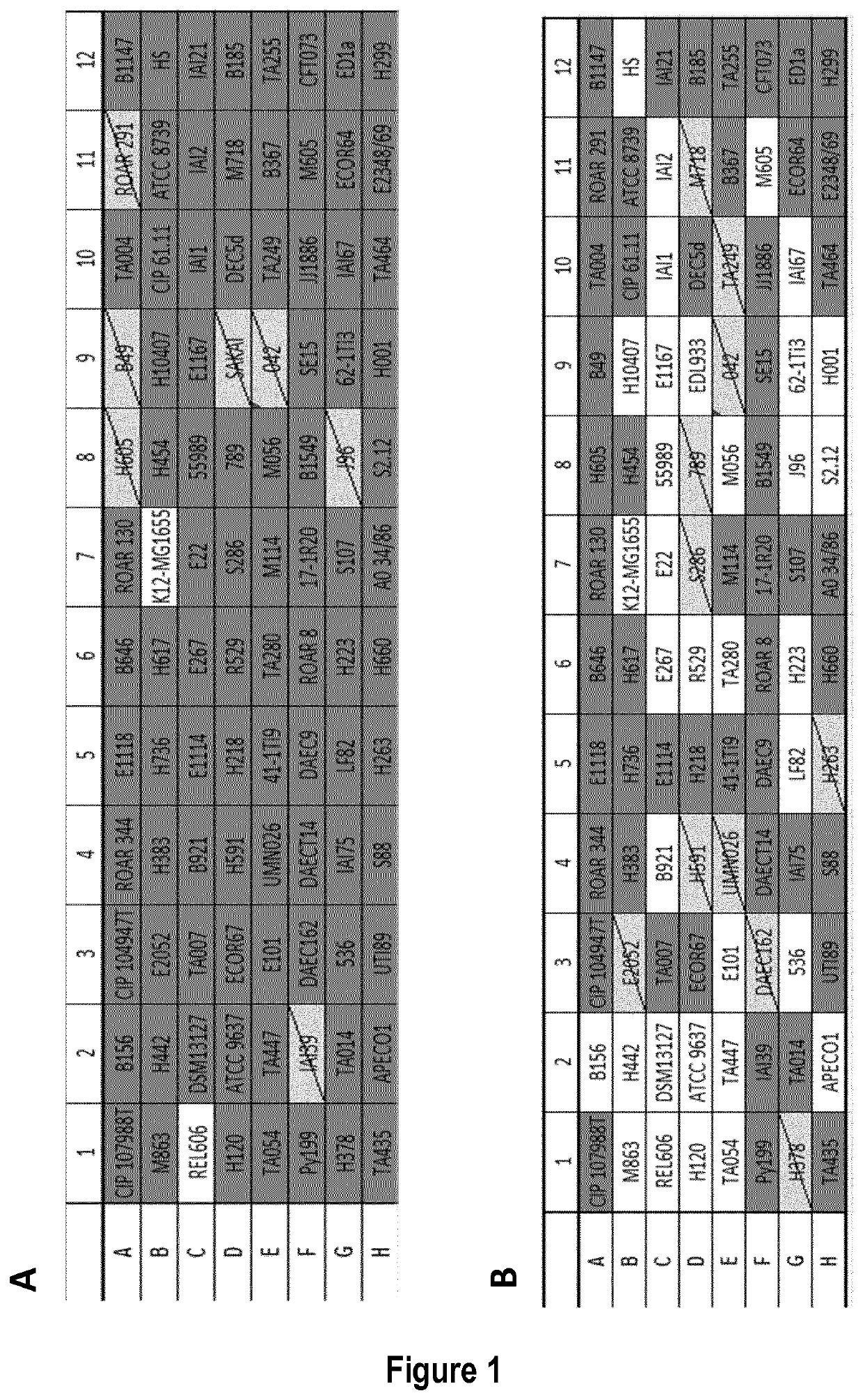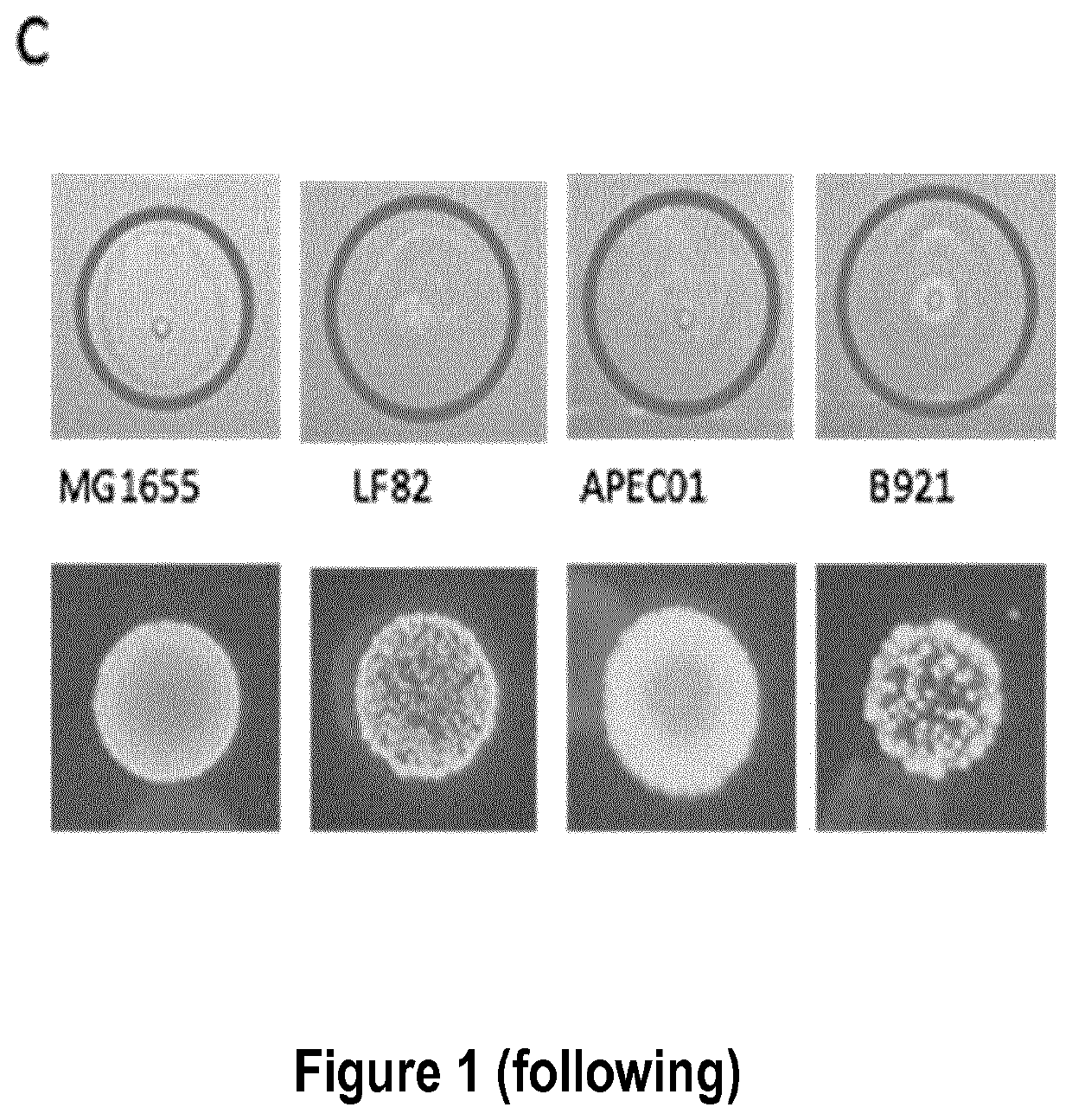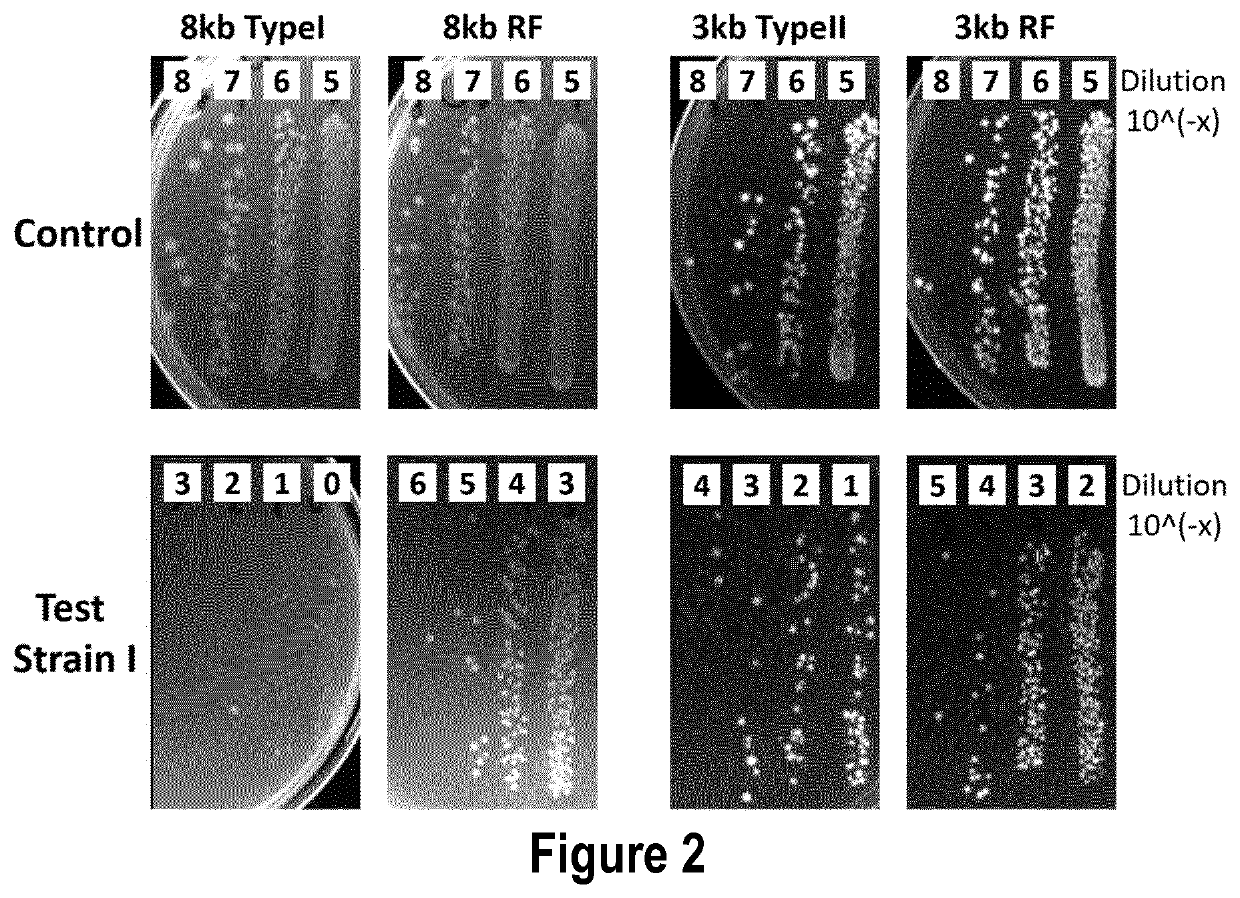Optimized vector for delivery in microbial populations
a technology of microbial populations and vectors, applied in the field of medicine, can solve the problems of reducing bacterial diversity, extending the duration of infection-related disease and even leading to patient death, and achieving the effect of improving the general health of subjects and improving the effectiveness of drugs
- Summary
- Abstract
- Description
- Claims
- Application Information
AI Technical Summary
Benefits of technology
Problems solved by technology
Method used
Image
Examples
example 1
[0349]As a proof of concept, a set of different Escherichia coli strains was tested against infection by bacteriophage Lambda. Cells were grown overnight in liquid LB plus maltose 0.2% at 37° C. Next day, cells were diluted 1:100 in fresh liquid LB medium plus 0.2% maltose and allowed to grow at 37° C. for 2 hours. A bacterial lawn was prepared by plating 500 μL of bacterial culture onto an LB-agar plate. Purified Lambda bacteriophage particles, containing the wild-type 48.5 kb genome, was spotted on the bacterial lawn and allowed to grow at 37° C. for 18 hours. Lambda injection efficiency was assessed by the presence of plaques (FIGS. 1 A and C). Only strains K12-MG1655 and REL606 were observed to form plaques, indicating Lambda phage delivery, while no effect was observed in any other of the 89 tested strains.
[0350]Next, the inventors have tested with a packed Lambda-based phagemid whether the injection efficiency could be improved. By using phagemids of a smaller size, potential ...
example 2
[0351]The inventors have tested by using six packed Lambda-based phagemids whether the removal of restriction sites within the phagemid DNA sequences improves the efficiency of the phagemid delivery and / or broadens the number of bacterial strains in which the phagemid can be delivered.
[0352]For this, the inventors constructed three variants of a larger (between 7.2-8.7 kb) phagemid, hereafter referred to as Lambda phagemid 8 kb, and three variants of a smaller (between 2.9-3.3 kb) phagemid, hereafter referred to as Lambda phagemid 3 kb. The three variants of each of the two phagemids differ in the presence of the restriction sites recognized by the type I and type II restriction modification (RM) systems of E. coli strains. The wild type (WT) variants of Lambda phagemid 8 kb and Lambda phagemid 3 kb have not been depleted of the E. coli restriction sites and thus, contain multiple sequences recognized by the RM nucleases of E. coli strains. In contrast, DNA sequences of the restrict...
PUM
 Login to View More
Login to View More Abstract
Description
Claims
Application Information
 Login to View More
Login to View More - R&D
- Intellectual Property
- Life Sciences
- Materials
- Tech Scout
- Unparalleled Data Quality
- Higher Quality Content
- 60% Fewer Hallucinations
Browse by: Latest US Patents, China's latest patents, Technical Efficacy Thesaurus, Application Domain, Technology Topic, Popular Technical Reports.
© 2025 PatSnap. All rights reserved.Legal|Privacy policy|Modern Slavery Act Transparency Statement|Sitemap|About US| Contact US: help@patsnap.com



